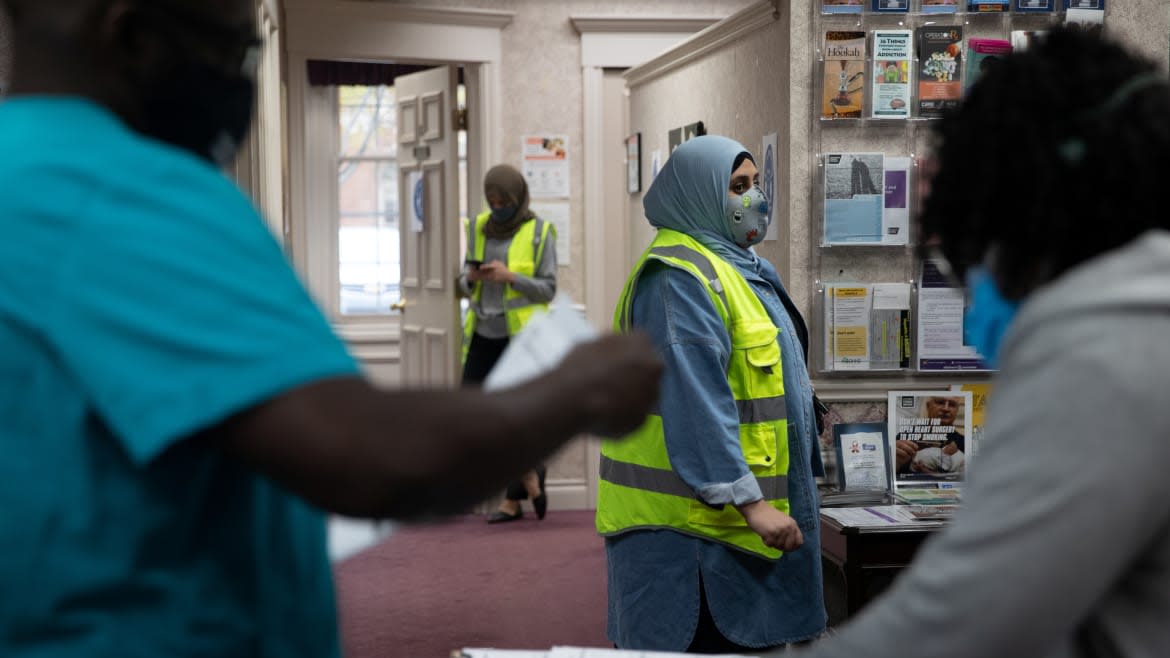Race to Save the World: Stopping the Next Pandemic Means We Need Equity in Public Health

Communities that were vulnerable before the pandemic only became more vulnerable as COVID raged. African Americans and Hispanics bore a disproportionate brunt of COVID-related hospitalizations and deaths and these groups continue to be less likely to get vaccinated than their white counterparts. Outside of the U.S., vaccination rates linger under 10 percent for at least 50 countries, and are closer to 2 percent in some of the poorest nations.
With vaccination rates woefully short of the 70 percent threshold most experts say is necessary to reach herd immunity, ongoing viral transmission provides more opportunities for dangerous variants like Delta to evolve. The disparities in public health are not simply a problem for low-income and minority communities—they will continue to allow COVID to thrive and give rise to future pandemics unless we resolve them now.
The health-care industry is taking notice. “The last year-and-a-half has really been sort of a defining moment for us,” Sanjay Shetty, the president of Steward Health Care System, said Wednesday at the Race to Save World virtual webinar, hosted by The Daily Beast in partnership with Pfizer. Shetty and his fellow panelists explained that a huge problem that exacerbated the pandemic from its earliest days was the fact that in many underserved communities, the lack of access to a trusted healthcare provider simply meant many people didn’t know where to go if they felt sick.
Shetty explained that Steward, the largest physician-owned for-profit health-care network in the U.S., pulled out all the stops to bolster its hospitals and clinics when COVID hit. Telehealth made it possible to give people more access to primary doctors and nurse practitioners. Predictive tools made it easier to figure out what communities needed more resources to withstand upticks in infection. Partnerships with local organizations made it easier for non-English speakers to feel comfortable seeing a doctor.
These efforts have created more avenues for delivering information to underserved populations—an extremely key part of not just resolving today’s pandemic, but preventing the next.
“Access to good information is everything.” That was the main lesson Timothy Callaghan, a public health expert at Texas A&M University, sought to impart. “It’s not like people are actively seeking to be uninformed—even people who are making the choice not to be vaccinated, they’re trying to see that information to help them make that decision.”
The deluge of misinformation has been a struggle to overcome for public health experts. When a vaccine was first announced, Callaghan and colleagues knew there were four groups most likely to express vaccine hesitancy: minorities (especially African Americans), conservatives, rural Americans, and people who distrust scientists.
The Pandemic Taught the U.S. How to Solve Its Hunger Problem
In some cases, efforts to persuade these communities have paid off. The Biden administration poured money into outreach and vaccine communication programs for minorities, and “that’s been quite effective,” said Callaghan.
The issue has been that as vaccination progressed, the vaccine itself was politicized. People who were formerly for the vaccine are now against it, especially conservatives, said Callaghan. And a huge concern is that hesitancy will live on beyond COVID, and encourage outbreaks for diseases like measles.
There’s no easy solution to this problem except to continue working to persuade people, through trusted personal sources. “You really need people from those communities to do the persuasion,” said Céline Gounder, an infectious disease specialist at New York University and Bellevue Hospital, and a member of the Biden-Harris Transition COVID-19 Advisory Board. “Black and Brown doctors and nurses have stepped up and done that. We simply have not seen that level of effort coming from some of these conservative communities.”
Gounder does think there’s one tool that needs to be more widely deployed: vaccination mandates. “For many people where getting vaccinated is stigmatized, these kinds of mandates provide cover.” If someone needs to be vaccinated to go to work, they can sidestep the political debate altogether.
But efforts to fix these disparities in the U.S. won’t matter if the rest of the world doesn’t improve its public health flaws as well. Gounder thinks the U.S. needs to lead by example in issues like boosters. Getting 100 million booster shots to Americans could “send the message to other countries,” she said. And if a country like India decided to follow suit, it could get boosters to 1.4 billion people—1/10th of the world. “There are downstream consequences to these policies.”
Of course, that means enabling the rest of the world to get access to the vaccine. Caroline Roan, the chief sustainability officer at Pfizer, emphasized that her company is selling the COVID vaccine to low-income countries at not-for-profit prices. Gounder would also like to see the world helping these countries build up their own regional vaccine manufacturing sites—for COVID as well as other diseases.
What all four panelists hope to see is American and global public health funding slip out from under the boom-and-bust cycle, in which lawmakers only devote money and resources to these things when there’s an emergency. There is no hope of avoiding another pandemic if the money for these initiatives dries up when the current one is over.
“If there’s a lesson to take away from this pandemic: yes we need public health funding right now,” said Callaghan. “But we can’t take it away from 2025, 2035, 2045. Otherwise we’ll be flatfooted the next time a pandemic comes around again.”
Get our top stories in your inbox every day. Sign up now!
Daily Beast Membership: Beast Inside goes deeper on the stories that matter to you. Learn more.

 Yahoo News
Yahoo News 
